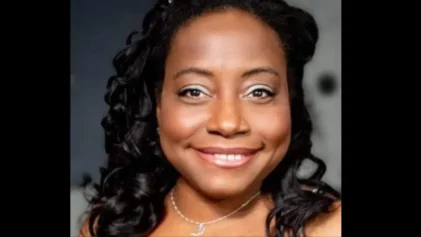
Museum of the American Revolution in Philadelphia (AP Photo/Matt Rourke)
PHILADELPHIA (AP) — Alongside a display of the Declaration of Independence at the Museum of the American Revolution, a separate tableau tells the story of Mumbet, an enslaved Black woman in Massachusetts who, upon hearing the document read aloud, announced that its proclamation that “all men are created equal” should also include her.
In response, her master hit her with a frying pan. Mumbet sued him, won her freedom in court, changed her name to Elizabeth Freeman and became a nurse. Her case set a precedent prohibiting slavery in the state.
The story is a reminder that during the struggle for our nation’s liberty, the 400,000 African Americans who lived in slavery in 1776 also longed to be free.
Such stories are found throughout the museum, which opens Wednesday in Philadelphia, coinciding with the 242nd anniversary of the battle at Lexington and Concord, the “shot heard ’round the world” that began the Revolutionary War in 1775. The more inclusive, clear-eyed view of the country’s turning points is an intentional departure from the whitewashed story America has often told itself and the world.
Instead, the museum seeks to show visitors that the revolution was a set of aspirational ideas founded on equality, individual rights and freedom that remain relevant today, president Michael Quinn said.
“These ideas rallied people from all walks of life, and they took those ideas to heart,” Quinn said “What unifies us as a people is our shared, common commitment to these ideas.”
At several points throughout the museum, visitors are forced to confront the contradictions of the high-minded ideals of the framers of the Constitution and the realities of their time, including slavery and the second-class status of women. Slavery, for example, would expand for nearly another century after the Revolutionary War ended, and despite arguing for their liberty at the start of America, women in the United States would fight for suffrage into the early 20th century.
The message: The ideals of the American Revolution belong not only to the Founding Fathers long revered by our country but also to the founding generation of Americans who first heard them and the generations that have come since.
“For over two centuries, if you said the words ‘founders of this country,’ the image that would pop to most people’s minds would be a white man,” said Scott Stephenson, vice president of collections, exhibitions and programming. “Increasingly, we at museums have realized we have got to tell a broader story.”
One exhibit features the story of the Oneida Indians, one of the first allies to support the nascent America, who fought and died alongside the colonist soldiers. Also on display is the active role of African-Americans, enslaved and free, in the war fighting with both the Continental and British armies, showing that Blacks were patriots also fighting for their own freedom.
Historical interpretations conjured from diaries and letters of the lives of five men and women who took various routes to freedom during the war are presented in an interactive digital installation. In paintings, dioramas and exhibits, the stories of figures including poet Phillis Wheatley and William Lee, valet to Gen. George Washington, challenge the idea of who could claim the title of “revolutionary.”
Visitors are asked to consider the question, “Freedom for whom?” said Adrienne Whaley, the museum’s manager for school programs.
“The struggle to become free predates the Revolution and it continues after the war is over,” she said. “The promise of America is defined by the ways in which we treat these people.”


